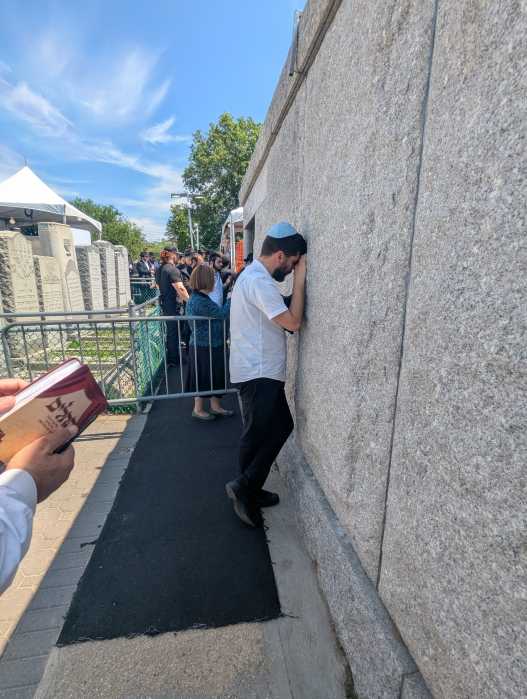With that in mind, he announced last Thursday $1 million in federal money for what he called a “softening” of…
By Cynthia Koons
U.S. Rep. Gary Ackerman (D-Queens) believes the chronic congestion in downtown Flushing could be eased with $2.5 million worth of bike paths.
With that in mind, he announced last Thursday $1 million in federal money for what he called a “softening” of College Point Boulevard, the industrial road that separates downtown Flushing from Willets Point and Shea Stadium.
That money will go toward deindustrializing the boulevard and connecting bikeways on either side of the roadway. It will also be used for improving vehicle access to downtown Flushing from LaGuardia Airport and for making Roosevelt Avenue more appealing to pedestrians from College Point Boulevard to the transit hub on Main Street.
“The project is designed to decrease traffic congestion and improve the under-utilized, city-owned waterfront site,” Ackerman told a news conference on the steps of Flushing Town Hall last Thursday.
Another $1 million is earmarked for the study, design and construction of bikeways, walkways and traffic mediation throughout downtown Flushing.
These improvements will link pedestrian and bike routes throughout the area.
“That’s the connectivity we’re looking for,” Ackerman said. “This is a comprehensive and intelligent approach to our expansion.”
Flushing’s growth has been regulated by the city since a master plan was created and the consulting firm Cooper Carry published a long-term proposal for the redevelopment of Flushing from the congested downtown toward the industrial coast of the Flushing River.
State Assemblyman Barry Grodenchik (D-Flushing), state Sen. Toby Ann Stavisky (D-Whitestone) and Councilman John Liu (D-Flushing) have vowed to be the first three people to swim in the Flushing River once the ongoing dredging project there is completed.
“This grant will help us to better utilize the Flushing River,” Liu said. “This $2.5 million will benefit in two very tangible ways. It will further bolster our status as a transit hub.”
Flushing’s Main Street and Roosevelt Avenue intersection is home to the end of the No. 7 line, a Long Island Rail Road station and a stop for several bus routes.
Community Board 7 Chairman Gene Kelty said luring pedestrians and bikers to Flushing was always a hope for the neighborhood, one that could never be implemented without this funding.
“They’re called community boards, but they’re really community planning boards,” he said. “When we don’t have the money, all the planning goes on the shelf.”
For the Roosevelt Avenue waterfront access, $480,000 of the $2.5 million was set aside for waterfront pathways that were mandated in the city’s “Downtown Flushing Waterfront Access Plan.”
That money will finance improvements to the deteriorated sidewalk that adjoins the Roosevelt Avenue Bridge.
The waterfront of Flushing River, according to master plans for the downtown’s growth, will be home to hundreds of residential units if development occurs as planned.
“More and more people are going to be living in Flushing, working in Flushing,” Grodenchik said.
“We want this to be a user-friendly town,” Ackerman added. “We want people to use bikes.”
Reach reporter Cynthia Koons by e-mail at news@timesledger.com or call 718-229-0300, Ext. 141.

































